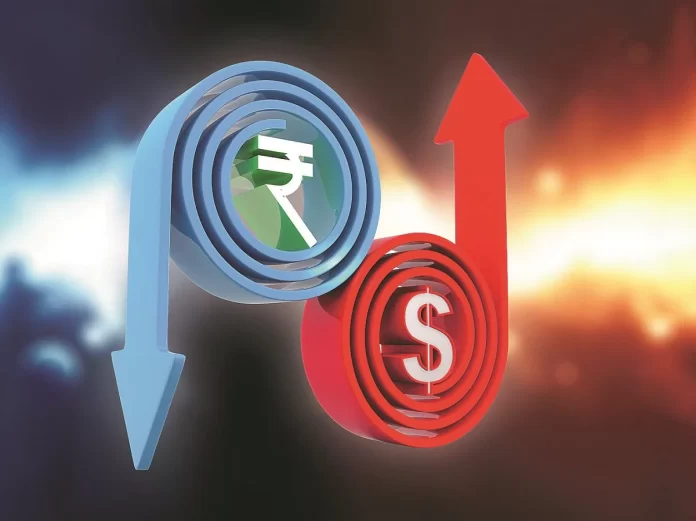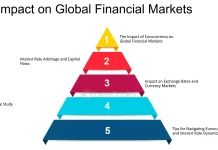On Tuesday, the rupee fell to an all-time low of 83.54 against the US dollar due to high demand for the US currency amid rising Middle East tensions and withdrawals from foreign portfolio investors (FPIs).
Analysts noted that the rupee continued to face pressure due to an increase in the US bond rate to 4.66-4.67 percent.
From the previous close of 83.45, the domestic currency lost 9 paise to end at a record low of 83.54 against the US dollar. The currency dropped to 83.55 throughout the day’s trading. Due to inflows of foreign funds and concerns about geopolitics, the value of the Indian rupee declined. Despite a more favourable macro environment, the local rupee continued to perform in the middle. The rupee has benefited from the reduction of the trade deficit, expectations of dollar inflows into the debt markets, and solid growth momentum, according to Dilip Parmar, Research Analyst at HDFC Securities.
According to analysts, the growing tension between Iran and Israel has made investors worldwide risk cautious, which has increased demand for the US dollar due to its attraction as a safe haven.
Fearing a bigger battle between the two countries, Iran launched drones and missiles on Israel last week in retaliation for the latter’s attack on it on April 1.
FPIs who are selling substantially in the equity market have also raised demand for the dollar.
According to statistics from the National Securities Depository Ltd (NSDL), FPIs sold Rs 3,233.48 crore of stocks on a net basis on Tuesday after selling around Rs 8,000 crore on Monday.
FPI sell-off is a result of expectations that the US Federal Reserve will postpone cutting interest rates, as well as worries about increased investment scrutiny following a recent change to the tax treaty between Mauritius and India.
In an effort to stop treaty misuse for tax evasion or avoidance, India has signed a protocol revising its Double Taxation Avoidance Agreement (DTAA) with Mauritius.
The US dollar index strengthened and crossed above $106, which hurt the rupee. The selling in the stock markets made the pressure on the rupee worse. The rupee also experienced downward pressure due to worries about geopolitical tensions in the Middle East, according to Jateen Trivedi, VP Research Analyst – Commodity and Currency, LKP Securities.
Rahul Kalantri, VP of Commodities at Mehta Equities, said that given the volatility of the dollar index this week, the rupee is likely to stay volatile as well. A pair may trade between 83.22 and 84.05.
According to HDFC Securities’ Parmar, the rupee may see a gradual decline in the near future, keeping the 83 mark while moving towards 83.70–84.
Tuesday saw the third straight day of declines in the domestic stock market, with the Sensex ending at 72,943.68, down 456 points, or 0.62 percent, and the Nifty falling 124.6 points, or 0.56 percent, to close at 22,147.9.





























